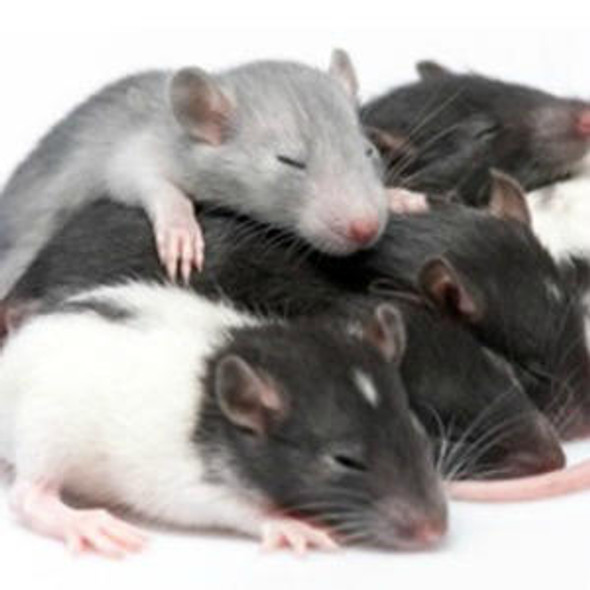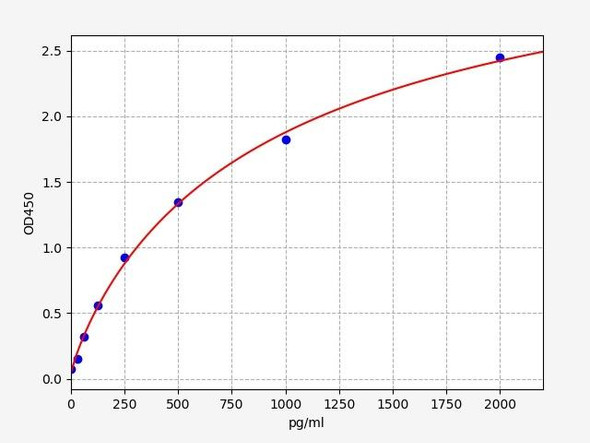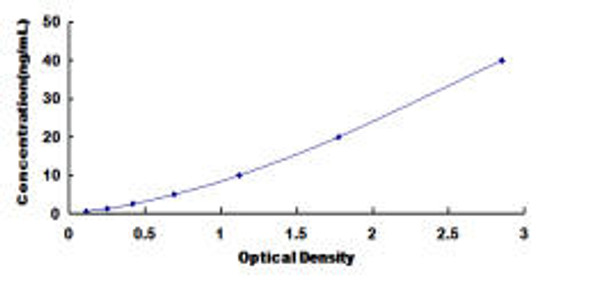Human BAD / Bcl2 antagonist of cell death ELISA Kit (HUFI01442)
- SKU:
- HUFI01442
- Product Type:
- ELISA Kit
- Size:
- 96 Assays
- Uniprot:
- Q92934
- Sensitivity:
- 0.094ng/ml
- Range:
- 0.156-10ng/ml
- ELISA Type:
- Sandwich
- Synonyms:
- BAD, Bcl2 antagonist of cell death, Bcl-XL, Bcl-2-associated death promoter, Bcl-2-binding component 6, Bcl-2-like protein 8, Bcl2-L-8, Bcl2 Associated Death Promoter, BBC2, BCL2L8
- Reactivity:
- Human
- Research Area:
- Cell Death
Description
Human BAD/Bcl2 antagonist of cell death ELISA Kit
The Human BAD (BCL2 Antagonist of Cell Death) ELISA Kit is a powerful tool for researchers looking to study the levels of the BAD protein in human samples. BAD is a key player in the regulation of apoptosis, or programmed cell death, and abnormalities in its expression have been linked to various diseases including cancer and autoimmune disorders.This ELISA kit offers high sensitivity and specificity, allowing for precise measurements of BAD levels in serum, plasma, and cell culture supernatants.
The reliable and reproducible results obtained with this kit make it an invaluable asset for investigations into the role of BAD in disease pathology and potential therapeutic interventions.By accurately measuring BAD levels, researchers can gain valuable insights into the mechanisms of cell death and survival, paving the way for advancements in personalized medicine and targeted therapies. Don't miss out on the opportunity to enhance your research with the Human BAD ELISA Kit.
| Product Name: | Human BAD / Bcl2 antagonist of cell death ELISA Kit |
| Product Code: | HUFI01442 |
| Size: | 96 Assays |
| Alias: | BAD, Bcl2 antagonist of cell death, Bcl-XL, Bcl-2-associated death promoter, Bcl-2-binding component 6, Bcl-2-like protein 8, Bcl2-L-8, Bcl2 Associated Death Promoter, BBC2, BCL2L8 |
| Detection method: | Sandwich ELISA, Double Antibody |
| Application: | This immunoassay kit allows for the in vitro quantitative determination of Human BAD concentrations in serum plasma and other biological fluids. |
| Sensitivity: | 0.094ng/ml |
| Range: | 0.156-10ng/ml |
| Storage: | 4°C for 6 months |
| Note: | For Research Use Only |
| Recovery: | Matrices listed below were spiked with certain level of Human BAD and the recovery rates were calculated by comparing the measured value to the expected amount of Human BAD in samples. | ||||||||||||||||
| |||||||||||||||||
| Linearity: | The linearity of the kit was assayed by testing samples spiked with appropriate concentration of Human BAD and their serial dilutions. The results were demonstrated by the percentage of calculated concentration to the expected. | ||||||||||||||||
| |||||||||||||||||
| CV(%): | Intra-Assay: CV<8% Inter-Assay: CV<10% |
| Component | Quantity | Storage |
| ELISA Microplate (Dismountable) | 8×12 strips | 4°C for 6 months |
| Lyophilized Standard | 2 | 4°C/-20°C |
| Sample/Standard Dilution Buffer | 20ml | 4°C |
| Biotin-labeled Antibody(Concentrated) | 120ul | 4°C (Protect from light) |
| Antibody Dilution Buffer | 10ml | 4°C |
| HRP-Streptavidin Conjugate(SABC) | 120ul | 4°C (Protect from light) |
| SABC Dilution Buffer | 10ml | 4°C |
| TMB Substrate | 10ml | 4°C (Protect from light) |
| Stop Solution | 10ml | 4°C |
| Wash Buffer(25X) | 30ml | 4°C |
| Plate Sealer | 5 | - |
Other materials and equipment required:
- Microplate reader with 450 nm wavelength filter
- Multichannel Pipette, Pipette, microcentrifuge tubes and disposable pipette tips
- Incubator
- Deionized or distilled water
- Absorbent paper
- Buffer resevoir
| Uniprot | Q92934 |
| UniProt Protein Function: | BAD: a proapoptotic member of the Bcl-2 family. Displaces Bax from binding to Bcl-2 and Bcl-xL, resulting in cell death. Survival factors such as IL-3 can inhibit the apoptotic activity of Bad inducing the phosphorylation of Bad by Akt and p90RSK. 14-3-3 proteins bind phosphorylated Bad, inhibiting its binding to Bcl-2 and Bcl-xL. Phosphorylation by mitochondria-anchored PKA in the BH3 domain can block the dimerization of Bad and Bcl-xL. |
| UniProt Protein Details: | Protein type:Apoptosis Chromosomal Location of Human Ortholog: 11q13.1 Cellular Component: mitochondrial outer membrane; mitochondrion; cytosol Molecular Function:protein kinase B binding; protein binding; protein heterodimerization activity; phospholipid binding; caspase activator activity; lipid binding; protein kinase binding; protein phosphatase 2B binding Biological Process: response to oleate; nerve growth factor receptor signaling pathway; positive regulation of apoptosis; positive regulation of proteolysis; apoptosis; response to glucocorticoid stimulus; positive regulation of caspase activity; glucose homeostasis; cellular process regulating host cell cycle in response to virus; response to estradiol stimulus; positive regulation of apoptosis by virus; response to glucose stimulus; pore complex biogenesis; positive regulation of autophagy; positive regulation of glucokinase activity; caspase activation; response to drug; epidermal growth factor receptor signaling pathway; release of cytochrome c from mitochondria; fibroblast growth factor receptor signaling pathway; phosphoinositide-mediated signaling; cytokine and chemokine mediated signaling pathway; suppression by virus of host apoptosis; ADP metabolic process; positive regulation of insulin secretion; response to testosterone stimulus; response to amino acid stimulus; ATP metabolic process; glucose catabolic process; response to ethanol; positive regulation of T cell differentiation; induction of apoptosis via death domain receptors; DNA damage response, signal transduction resulting in induction of apoptosis; response to hydrogen peroxide; innate immune response; positive regulation of B cell differentiation; regulation of mitochondrial membrane permeability; response to progesterone stimulus; response to calcium ion; positive regulation of epithelial cell proliferation |
| NCBI Summary: | The protein encoded by this gene is a member of the BCL-2 family. BCL-2 family members are known to be regulators of programmed cell death. This protein positively regulates cell apoptosis by forming heterodimers with BCL-xL and BCL-2, and reversing their death repressor activity. Proapoptotic activity of this protein is regulated through its phosphorylation. Protein kinases AKT and MAP kinase, as well as protein phosphatase calcineurin were found to be involved in the regulation of this protein. Alternative splicing of this gene results in two transcript variants which encode the same isoform. [provided by RefSeq, Jul 2008] |
| UniProt Code: | Q92934 |
| NCBI GenInfo Identifier: | 17371773 |
| NCBI Gene ID: | 572 |
| NCBI Accession: | Q92934.3 |
| UniProt Secondary Accession: | Q92934,O14803, Q6FH21, |
| UniProt Related Accession: | Q92934 |
| Molecular Weight: | 168 |
| NCBI Full Name: | Bcl2-associated agonist of cell death |
| NCBI Synonym Full Names: | BCL2-associated agonist of cell death |
| NCBI Official Symbol: | BAD |
| NCBI Official Synonym Symbols: | BBC2; BCL2L8 |
| NCBI Protein Information: | bcl2-associated agonist of cell death; bcl2-L-8; BCL2-binding protein; bcl-2-like protein 8; BCL2-binding component 6; bcl-2-binding component 6; BCL-X/BCL-2 binding protein; bcl2 antagonist of cell death; BCL2-antagonist of cell death protein; bcl-XL/Bcl-2-associated death promoter |
| UniProt Protein Name: | Bcl2-associated agonist of cell death |
| UniProt Synonym Protein Names: | Bcl-2-binding component 6; Bcl-2-like protein 8; Bcl2-L-8; Bcl-xL/Bcl-2-associated death promoter; Bcl2 antagonist of cell death |
| Protein Family: | Bcl2-associated agonist of cell death |
| UniProt Gene Name: | BAD |
| UniProt Entry Name: | BAD_HUMAN |
*Note: Protocols are specific to each batch/lot. For the correct instructions please follow the protocol included in your kit.
Before adding to wells, equilibrate the SABC working solution and TMB substrate for at least 30 min at 37°C. When diluting samples and reagents, they must be mixed completely and evenly. It is recommended to plot a standard curve for each test.
| Step | Protocol |
| 1. | Set standard, test sample and control (zero) wells on the pre-coated plate respectively, and then, record their positions. It is recommended to measure each standard and sample in duplicate. Wash plate 2 times before adding standard, sample and control (zero) wells! |
| 2. | Aliquot 0.1ml standard solutions into the standard wells. |
| 3. | Add 0.1 ml of Sample / Standard dilution buffer into the control (zero) well. |
| 4. | Add 0.1 ml of properly diluted sample ( Human serum, plasma, tissue homogenates and other biological fluids.) into test sample wells. |
| 5. | Seal the plate with a cover and incubate at 37 °C for 90 min. |
| 6. | Remove the cover and discard the plate content, clap the plate on the absorbent filter papers or other absorbent material. Do NOT let the wells completely dry at any time. Wash plate X2. |
| 7. | Add 0.1 ml of Biotin- detection antibody working solution into the above wells (standard, test sample & zero wells). Add the solution at the bottom of each well without touching the side wall. |
| 8. | Seal the plate with a cover and incubate at 37°C for 60 min. |
| 9. | Remove the cover, and wash plate 3 times with Wash buffer. Let wash buffer rest in wells for 1 min between each wash. |
| 10. | Add 0.1 ml of SABC working solution into each well, cover the plate and incubate at 37°C for 30 min. |
| 11. | Remove the cover and wash plate 5 times with Wash buffer, and each time let the wash buffer stay in the wells for 1-2 min. |
| 12. | Add 90 µl of TMB substrate into each well, cover the plate and incubate at 37°C in dark within 10-20 min. (Note: This incubation time is for reference use only, the optimal time should be determined by end user.) And the shades of blue can be seen in the first 3-4 wells (with most concentrated standard solutions), the other wells show no obvious color. |
| 13. | Add 50 µl of Stop solution into each well and mix thoroughly. The color changes into yellow immediately. |
| 14. | Read the O.D. absorbance at 450 nm in a microplate reader immediately after adding the stop solution. |
When carrying out an ELISA assay it is important to prepare your samples in order to achieve the best possible results. Below we have a list of procedures for the preparation of samples for different sample types.
| Sample Type | Protocol |
| Serum | If using serum separator tubes, allow samples to clot for 30 minutes at room temperature. Centrifuge for 10 minutes at 1,000x g. Collect the serum fraction and assay promptly or aliquot and store the samples at -80°C. Avoid multiple freeze-thaw cycles. If serum separator tubes are not being used, allow samples to clot overnight at 2-8°C. Centrifuge for 10 minutes at 1,000x g. Remove serum and assay promptly or aliquot and store the samples at -80°C. Avoid multiple freeze-thaw cycles. |
| Plasma | Collect plasma using EDTA or heparin as an anticoagulant. Centrifuge samples at 4°C for 15 mins at 1000 × g within 30 mins of collection. Collect the plasma fraction and assay promptly or aliquot and store the samples at -80°C. Avoid multiple freeze-thaw cycles. Note: Over haemolysed samples are not suitable for use with this kit. |
| Urine & Cerebrospinal Fluid | Collect the urine (mid-stream) in a sterile container, centrifuge for 20 mins at 2000-3000 rpm. Remove supernatant and assay immediately. If any precipitation is detected, repeat the centrifugation step. A similar protocol can be used for cerebrospinal fluid. |
| Cell culture supernatant | Collect the cell culture media by pipette, followed by centrifugation at 4°C for 20 mins at 1500 rpm. Collect the clear supernatant and assay immediately. |
| Cell lysates | Solubilize cells in lysis buffer and allow to sit on ice for 30 minutes. Centrifuge tubes at 14,000 x g for 5 minutes to remove insoluble material. Aliquot the supernatant into a new tube and discard the remaining whole cell extract. Quantify total protein concentration using a total protein assay. Assay immediately or aliquot and store at ≤ -20 °C. |
| Tissue homogenates | The preparation of tissue homogenates will vary depending upon tissue type. Rinse tissue with 1X PBS to remove excess blood & homogenize in 20ml of 1X PBS (including protease inhibitors) and store overnight at ≤ -20°C. Two freeze-thaw cycles are required to break the cell membranes. To further disrupt the cell membranes you can sonicate the samples. Centrifuge homogenates for 5 mins at 5000xg. Remove the supernatant and assay immediately or aliquot and store at -20°C or -80°C. |
| Tissue lysates | Rinse tissue with PBS, cut into 1-2 mm pieces, and homogenize with a tissue homogenizer in PBS. Add an equal volume of RIPA buffer containing protease inhibitors and lyse tissues at room temperature for 30 minutes with gentle agitation. Centrifuge to remove debris. Quantify total protein concentration using a total protein assay. Assay immediately or aliquot and store at ≤ -20 °C. |
| Breast Milk | Collect milk samples and centrifuge at 10,000 x g for 60 min at 4°C. Aliquot the supernatant and assay. For long term use, store samples at -80°C. Minimize freeze/thaw cycles. |






